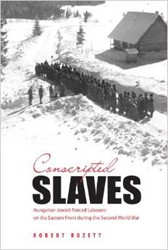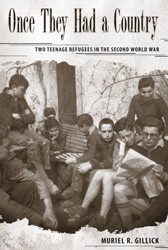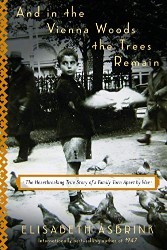Between the early nineteenth and twentieth centuries, the populations of Buda, Pest, and Óbuda — which merged to form Budapest — grew from 54,000 to nearly one million, transforming the city into one of Europe’s largest.
Straddling the Danube, Hungary’s cosmopolitan capital was known for its high culture, ornate buildings, and irrepressible nightlife. About one in four residents were Jewish. As subjects of the Habsburg Empire, they enjoyed full civil rights.
By the winter of 1944 – 45, Nazi forces had occupied Budapest, the Red Army was closing in, and Allied bombing raids leveled city blocks. Most buildings “stood like rows of jagged, broken teeth,” writes Adam LeBor in his searing account of a city at war. Though not marketed as a book about Hungarian Jewry, “The Last Days of Budapest” is as much about the destruction of a people as it is about the fall of a capital.
While most Jews living outside the city were eventually deported, forced into labor battalions, or sent on death marches, some 120,000 survived the Holocaust in Budapest after enduring ghettoization and the terror unleashed by Arrow Cross militiamen. By war’s end, they comprised the largest surviving Jewish population of Nazi-occupied Europe.
LeBor, a former Budapest-based correspondent, opens with the end of World War I. A Communist regime — led in part by Jewish revolutionaries — ruled for just 133 days. Admiral Miklós Horthy and his men seized power and formed an authoritarian government. The association between Jews and Communism proved durable.
In 1920, Hungary lost two-thirds of its territory through the Treaty of Trianon. The country’s psyche never recovered. Paramilitary groups launched terror campaigns against suspected Communists for past excesses and disproportionately targeted Jews. As LeBor stresses, the violence “was not state-organized. But it was state-tolerated.” Horthy pardoned the participants. In doing so, he allowed the far right to have “tasted power: physical, on the streets and in its torture chambers, and politcal, in the corridors of power.”
The country would drift toward Germany, eventually joining its invasion of the Soviet Union in June 1941. Meanwhile, life in the faraway capital remained unchanged. Anti-Jewish laws intensified, but Hungarian Jews were largely protected.
LeBor’s colorful history of early wartime Budapest— a city full of spies and intrigue — is vividly rendered in this bottom-up history. He draws on voices from various underground movements, neutral diplomats, aristocrats, smugglers, soldiers, survivors, and more. Among LeBor’s interviewees is his late father-in-law, Róbert Lichtenstein, who, at fourteen, narrowly evaded the Arrow Cross as the Red Army captured Budapest.
Despite Hungary’s heavy losses on the Eastern Front, Horthy failed to break with the Axis. As LeBor shows, he was ill-equipped for the moment, hesitating when decisive action was needed and squandering precious time.
The March 1944 German invasion sealed the country’s fate. While previously rejecting German demands for large-scale deportations, Horthy “turned his face to the wall” when Hungarian gendarmes and other authorities helped the Nazis send hundreds of thousands of Jews to Auschwitz-Birkenau. Under growing domestic and international pressure, he succeeded in slowing the deportations. But when negotiating a ceasefire with the Soviets, the Arrow Cross seized control. Its members shot scores of Jewish civilians.
The Red Army’s siege reduced nearly all of Budapest to rubble and introduced only more horrors. In The Last Days of Budapest, LeBor chronicles the destruction of a city under the weight of war, grievance, and betrayal.
Maksim Goldenshteyn is Seattle-based writer and the author of the 2022 book So They Remember, a family memoir and history of the Holocaust in Soviet Ukraine.





